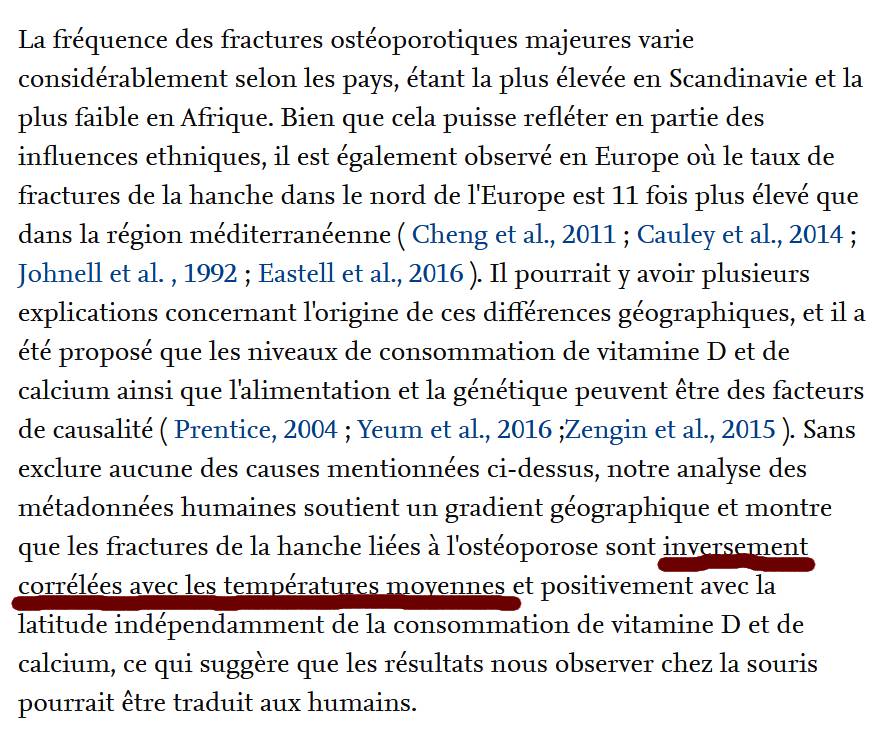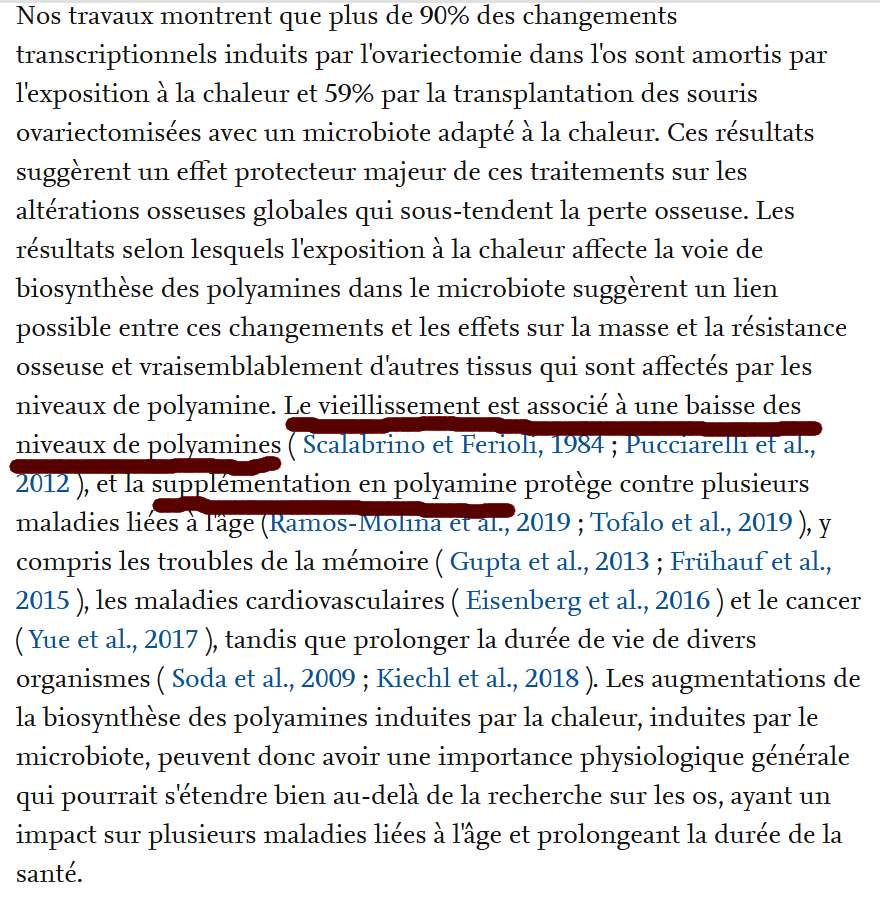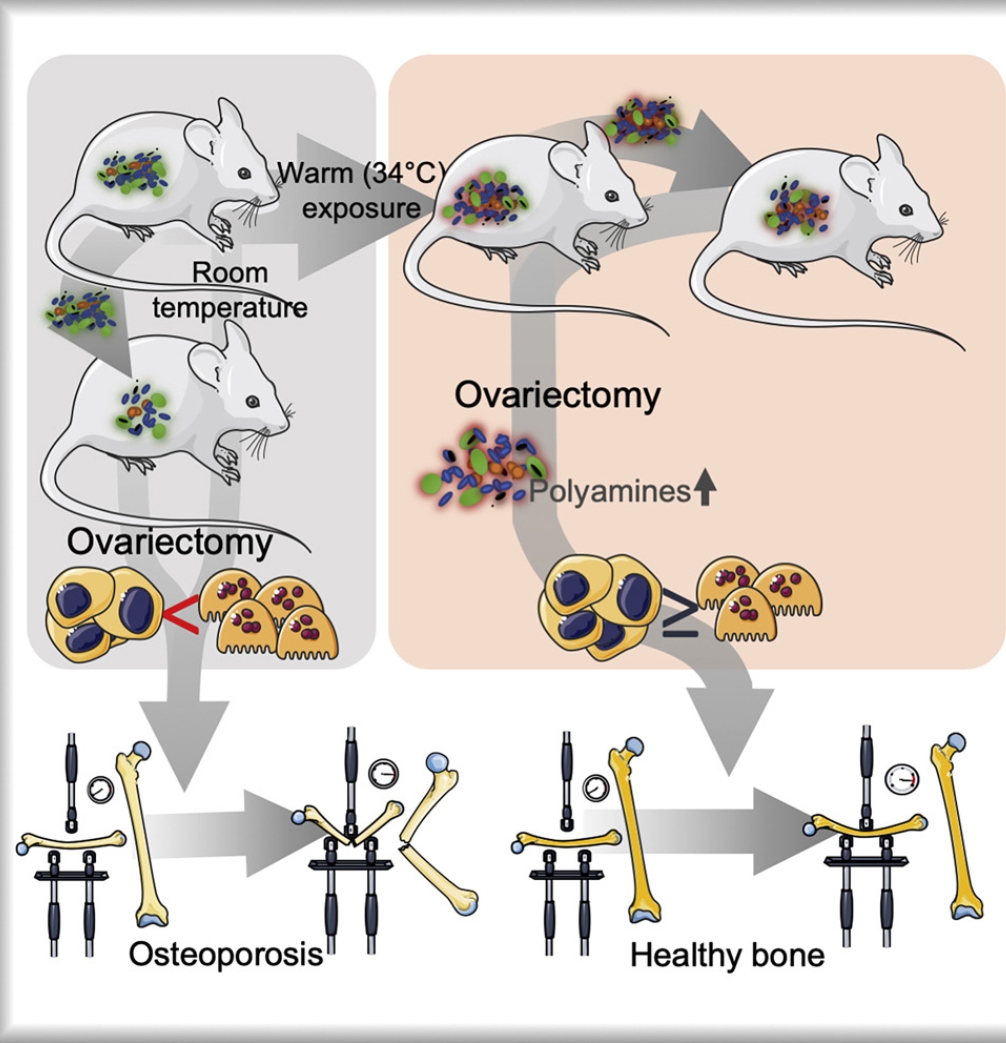Warmth Prevents Bone Loss Through the Gut Microbiota
Claire Chevalier Cell Metabolism Available online 10 September 2020
Highlights
• Warm exposure improves bone strength in adulthood and prevents osteoporosis in mice
• Human meta-analyses show inverse correlation between hip fractures and temperature
• Transplantation of warm-adapted microbiota prevents bone loss
• Warmth enhances production of polyamines that increase bone strength
Osteoporosis is the most prevalent metabolic bone disease, characterized by low bone mass and microarchitectural deterioration. Here, we show that warmth exposure (34°C) protects against ovariectomy-induced bone loss by increasing trabecular bone volume, connectivity density, and thickness, leading to improved biomechanical bone strength in adult female, as well as in young male mice. Transplantation of the warm-adapted microbiota phenocopies the warmth-induced bone effects. Both warmth and warm microbiota transplantation revert the ovariectomy-induced transcriptomics changes of the tibia and increase periosteal bone formation. Combinatorial metagenomics/metabolomics analysis shows that warmth enhances bacterial polyamine biosynthesis, resulting in higher total polyamine levels in vivo. Spermine and spermidine supplementation increases bone strength, while inhibiting polyamine biosynthesis in vivo limits the beneficial warmth effects on the bone.
Our data suggest warmth exposure as a potential treatment option for osteoporosis while providing a mechanistic framework for its benefits in bone disease.
















